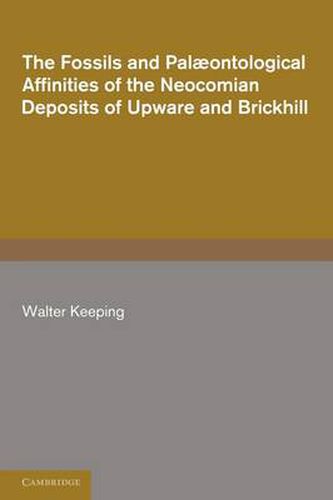Readings Newsletter
Become a Readings Member to make your shopping experience even easier.
Sign in or sign up for free!
You’re not far away from qualifying for FREE standard shipping within Australia
You’ve qualified for FREE standard shipping within Australia
The cart is loading…






First published in 1883, this study of the fossils of Upware and Brickhill originally appeared in 1879 as the Sedgwick Prize Essay for that year. Its author, Walter Keeping, was an expert in the Neocomian faunas of Cambridgeshire and Bedfordshire, and in this comparative study he examines the close palaeontological relationship between the Ironsand and Phosphatic series of fossils found at Upware, Potton, Brickhill, and Farringdon. He goes on to explore the resemblance of Upware oysters to Jurassic species, the distribution of Brachiopod shells, and the difficulties that arise when attempting to date fossils. Containing tables of vertebrate and invertebrate examples from England and Europe as well as an eight-plate section of detailed illustrations, this volume will be of value to anyone interested in geological and palaeontological studies from the nineteenth century.
$9.00 standard shipping within Australia
FREE standard shipping within Australia for orders over $100.00
Express & International shipping calculated at checkout
First published in 1883, this study of the fossils of Upware and Brickhill originally appeared in 1879 as the Sedgwick Prize Essay for that year. Its author, Walter Keeping, was an expert in the Neocomian faunas of Cambridgeshire and Bedfordshire, and in this comparative study he examines the close palaeontological relationship between the Ironsand and Phosphatic series of fossils found at Upware, Potton, Brickhill, and Farringdon. He goes on to explore the resemblance of Upware oysters to Jurassic species, the distribution of Brachiopod shells, and the difficulties that arise when attempting to date fossils. Containing tables of vertebrate and invertebrate examples from England and Europe as well as an eight-plate section of detailed illustrations, this volume will be of value to anyone interested in geological and palaeontological studies from the nineteenth century.